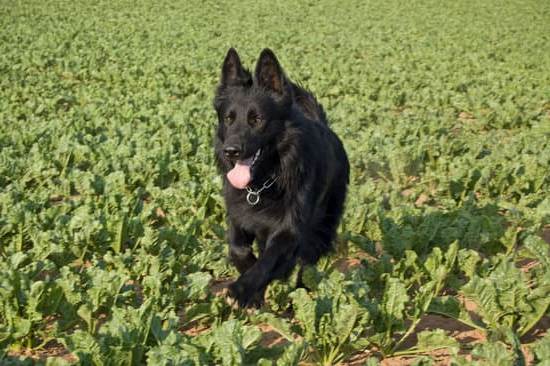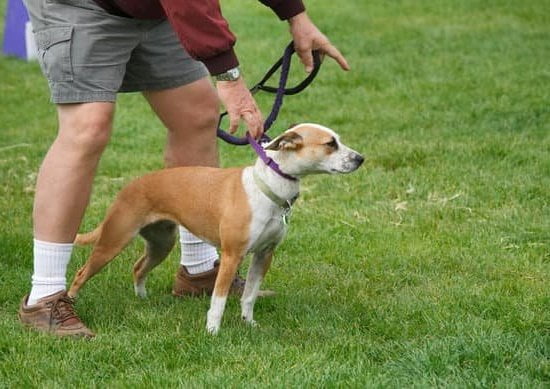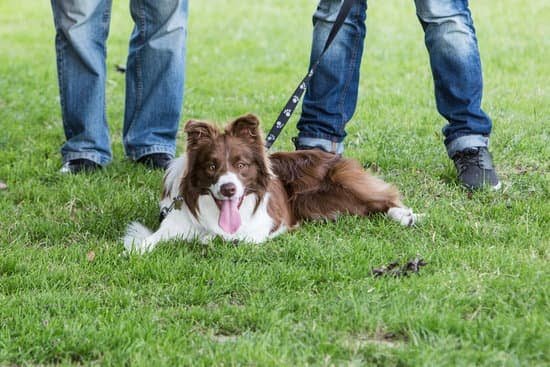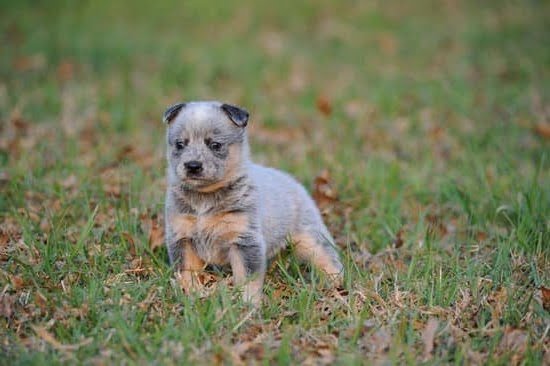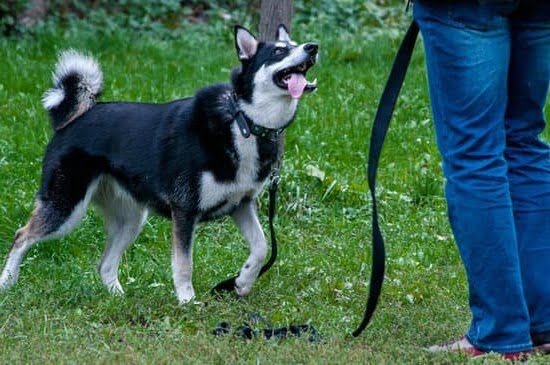Training a dog to search for things is not only beneficial for activities like search and rescue or hunting, but it can also provide mental stimulation and a sense of purpose for our furry companions. In this article, we will explore the various aspects of training a dog to search, from understanding their natural instincts to introducing advanced techniques and equipment.
Understanding a dog’s natural instincts for searching is crucial in effectively training them for this purpose. Dogs have an innate ability to track scents and locate objects, making them valuable assets in various search-related tasks. By tapping into their natural abilities and providing the right guidance, owners can harness this talent for practical applications or simply for fun activities.
One of the first steps in training a dog to search is identifying the right breed for this type of training. While many breeds have strong scent-tracking abilities, some may be better suited for specific tasks than others. Additionally, basic training commands and positive reinforcement play fundamental roles in establishing a solid foundation for search activities. Through consistent training techniques and rewards, dogs can learn to associate searching with positive experiences.
Understanding a Dog’s Natural Instincts for Searching
Canine Hunting Instincts
Dogs have been bred for various tasks over the centuries, including hunting and retrieving. These natural instincts are still present in many breeds today, making them excellent candidates for search training. Understanding your dog’s inherent desire to sniff out and locate objects is crucial when it comes to effectively training them for search activities.
Utilizing the Senses
A dog’s sense of smell is far superior to that of humans, with an estimated 300 million olfactory receptors in their noses compared to our mere 5-6 million. This heightened sense of smell allows dogs to pick up scents from great distances and distinguish between different odors with remarkable accuracy. Additionally, their hearing and vision also play a role in their ability to locate objects, making them well-equipped for search training.
Mental Stimulation and Physical Exercise
Engaging in search activities provides mental stimulation for dogs, fulfilling their natural curiosity and problem-solving instincts. It also serves as an excellent form of physical exercise, keeping them active and healthy. By tapping into a dog’s natural instincts for searching, owners can create a fulfilling and enjoyable training experience that strengthens the bond between them and their canine companions while keeping their minds and bodies engaged.
Identifying the Right Breed for Search Training
When it comes to training a dog to search for things, it’s important to consider the breed of the dog. Not all dogs have the same natural instincts and abilities when it comes to searching, so identifying the right breed for search training is crucial. Here are some breeds that tend to excel in search and rescue activities:
- German Shepherd: Known for their intelligence, loyalty, and strong sense of smell, German Shepherds are often used in police and military search operations.
- Labrador Retriever: These friendly and outgoing dogs have a strong drive to retrieve and are often used in search and rescue missions due to their excellent scenting abilities.
- Bloodhound: Considered one of the best tracking dogs, Bloodhounds have an incredible sense of smell and can follow a scent trail for miles.
- Belgian Malinois: With their high energy levels and intense focus, Belgian Malinois are often used in search and detection work.
It’s important to note that while these breeds are known for their search abilities, any dog can be trained to perform search activities with the right training and motivation. When considering a breed for search training, it’s essential to assess the individual dog’s temperament, energy level, and willingness to engage in search activities.
In addition to selecting a suitable breed for search training, it’s also crucial to consider the age and physical condition of the dog. While younger dogs might have more energy and stamina for extensive searches, older dogs can still excel in this type of training with proper conditioning and modifications to training exercises.
Basic Training Commands for Search Activities
When training a dog to search for things, it is crucial to start with the basics of obedience training. Teaching commands such as “sit,” “stay,” “come,” and “heel” will form the foundation for successful search training. These commands will not only help in controlling the dog during search activities but also ensure their safety and the safety of others.
One of the most important commands to teach a dog for search activities is “seek” or “find.” This command will be used to signal to the dog that they are actively searching for something. Consistent practice and repetition will help the dog understand what is expected of them when given this command.
In addition to teaching basic commands, it is essential to work on building a strong bond and communication with your dog. Being able to understand their body language and cues will greatly improve the effectiveness of their search abilities. Through consistent training and positive reinforcement, dogs can become reliable partners in various search and rescue scenarios.
Using Positive Reinforcement and Rewards in Search Training
Training a dog to search for things can be a rewarding and fun activity for both the dog and the owner. One of the key elements in successful search training is using positive reinforcement and rewards to encourage the desired behavior in the dog. Here are some tips on how to effectively use positive reinforcement in search training:
- Use treats or toys: When the dog successfully finds an item during a search, immediately reward them with a treat or a favorite toy. This positive association will encourage them to continue searching eagerly.
- Verbal praise: Dogs respond well to verbal praise, so make sure to enthusiastically praise your dog when they successfully complete a search task. Use phrases like “good job” or “well done” to reinforce their behavior.
- Clicker training: Clicker training can be an effective way to mark the exact moment when the dog exhibits the desired behavior during a search. Pairing the click sound with a reward helps the dog understand which actions lead to positive outcomes.
By consistently using positive reinforcement during search training, you can strengthen the bond between you and your dog while also improving their search skills. This method encourages the dog’s natural instincts for searching and creates a fun and engaging experience for both of you.
Overall, using positive reinforcement and rewards in search training is an essential component of success. It motivates and encourages your dog to actively participate in search activities, making it more likely that they will continue to enjoy and excel at this type of training. Remember that patience, consistency, and plenty of rewards are crucial elements in teaching your dog how to effectively search for items.
Introducing Scent Tracking for Advanced Search Skills
Scent tracking is an advanced skill that builds on a dog’s natural ability to follow scents. Dogs have an incredibly strong sense of smell, and scent tracking allows them to use this ability in a structured and focused way. This skill is particularly useful for search and rescue dogs, as well as for activities like nose work and scent detection.
Training a dog for scent tracking involves introducing them to specific scents and teaching them to follow the trail of that scent. It starts with basic scent recognition, where the dog learns to associate a particular scent with a reward. Once the dog understands the concept of tracking scents, they can be trained to follow longer trails with more complex patterns.
To introduce scent tracking, start with a strong-smelling treat or toy, and allow the dog to sniff it before hiding it in an easy-to-find location. Gradually increase the difficulty by hiding the item in more challenging spots and eventually introducing different scents for the dog to track. Positive reinforcement is crucial during this training process, as it encourages the dog to continue following scents even when they become more challenging.
| Scent Tracking Tips | Benefits |
|---|---|
| Start with strong-smelling items | Enhances natural abilities |
| Use positive reinforcement | Strengthens bond between owner and dog |
| Gradually increase difficulty | Engages problem-solving skills in dogs |
Tips for Creating Search Scenarios and Challenges
Training a dog to search for things can be an enriching and enjoyable activity for both the dog and the owner. Once the basic training commands for search activities have been established, it is important to create scenarios and challenges that will keep the dog engaged and motivated. This section will provide tips for creating effective search scenarios and challenges for your canine companion.
Use Different Environments
To keep your dog’s search skills sharp, it is essential to introduce them to various environments. Start with simple indoor searches, then progress to outdoor spaces such as parks or fields. As your dog becomes more proficient, consider introducing more challenging environments like wooded areas or places with distractions such as other people or animals. By exposing your dog to different settings, you can help them develop adaptability in their searching abilities.
Hide Multiple Items
Once your dog has mastered finding a single item, increase the difficulty by hiding multiple items in one session. This will require them to use their scent tracking skills more extensively and will provide mental stimulation as they work through finding each item. Gradually increase the number of items hidden to further challenge your dog as they become more skilled at search activities.
Adjusting the Difficulty
It is crucial to adjust the difficulty level of search scenarios based on your dog’s progress. If they are consistently successful in finding hidden items, consider hiding them in more challenging locations or increasing the distance between hiding spots. Conversely, if your dog is struggling to find hidden items, simplify the scenario by using stronger scents or making the hiding spots more accessible before gradually increasing difficulty again.
By implementing these tips for creating search scenarios and challenges, you can enhance your dog’s searching abilities while providing a stimulating and rewarding activity for them to enjoy.
Troubleshooting Common Challenges in Search Training
Training a dog to search for things can be an exciting and rewarding experience, but it can also come with its own set of challenges. One common challenge is when a dog becomes easily distracted during search training.
This can happen when the environment is too stimulating or when the dog is not fully focused on the task at hand. To troubleshoot this, it’s important to start training in a low-distraction environment and gradually increase the level of distractions as the dog becomes more proficient in their searching skills.
Another common challenge in search training is when a dog loses interest in searching for items. This can occur if the rewards are not motivating enough, or if the training sessions become too repetitive or long. To address this issue, it’s important to keep training sessions short and engaging, while also ensuring that the rewards for finding items are high-value treats or toys that the dog truly enjoys.
Additionally, some dogs may struggle with understanding specific search commands or may have difficulty differentiating between various scents. In these cases, it’s essential to revisit basic training commands for search activities and introduce scent tracking exercises gradually to help the dog develop advanced search skills.
| Common Challenge | Troubleshooting Solutions |
|---|---|
| Easily Distracted | Start training in low-distraction environments and gradually increase distractions |
| Losing Interest | Keep training sessions short and engaging, use high-value rewards, avoid repetition |
| Difficulty with Commands or Scents | Revisit basic commands and introduce scent tracking exercises gradually |
Taking Search Training to the Next Level With Advanced Techniques and Equipment
In conclusion, taking search training to the next level with advanced techniques and equipment can greatly enhance your dog’s searching abilities. By incorporating more complex search scenarios, introducing scent tracking, and using specialized equipment such as scent articles or odor containers, you can continue to challenge and stimulate your dog’s natural instincts for searching.
Additionally, advanced techniques like teaching your dog to differentiate between multiple scents or to follow a trail over long distances can further develop their search skills.
As you progress in search training with your dog, it is important to remain patient and consistent. Advanced techniques may take more time and effort for both you and your dog to master, but the rewards are well worth it. Continuing to use positive reinforcement and rewards will keep your dog motivated and engaged in their search training, even as the challenges become more complex.
Ultimately, taking your dog’s search training to the next level can be a fulfilling experience for both you and your furry companion. The bond that is formed through this type of training is invaluable, and seeing your dog confidently navigate through various search scenarios is a testament to the hard work and dedication put into their training. Remember to always celebrate small victories along the way and enjoy the journey of developing your dog’s natural instincts for searching.
Frequently Asked Questions
How Do I Train My Dog to Be a Search Dog?
Training a dog to be a search dog requires patience, consistency, and positive reinforcement. Start by teaching your dog to find a particular scent or item through simple games or exercises.
Gradually increase the difficulty and complexity of the search tasks, and introduce obedience training to ensure your dog can follow commands while searching. It’s also important to work with a professional trainer if you’re serious about training your dog for search and rescue work.
How Do You Teach a Dog to Find an Item?
Teaching a dog to find an item begins with basic scent work. Choose an item with a distinctive smell, such as a favorite toy or treat, and encourage your dog to associate that smell with something positive.
Start with simple hiding spots and gradually make it more challenging for your dog to find the item. Repeat the process using different objects, locations, and distractions to help your dog generalize the searching behavior.
How Do You Play Search With Your Dog?
Playing search games with your dog can be both fun and mentally stimulating for them. You can start by hiding treats or toys around the house or in the yard and encouraging your dog to search for them using their sense of smell.
As they become more proficient, you can make the game more challenging by increasing the number of hiding spots or using more difficult locations. Just remember to keep it lighthearted and rewarding for your furry friend!

Welcome to the blog! I am a professional dog trainer and have been working with dogs for many years. In this blog, I will be discussing various topics related to dog training, including tips, tricks, and advice. I hope you find this information helpful and informative. Thanks for reading!

